10
Showing 3401–3450 of 6732 results
-
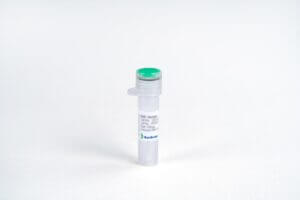
OSM (209aa), Human
$86.25 Add to cart View Product DetailsOncostatin M (OSM) is a multifunctional cytokine, and belongs to Interleukin-6 (IL-6) subfamily, which also includes IL-11, leukemia inhibitory factor (LIF), ciliary neurotropic factor, cardiotrophin-1, and novel neurotropin-1. In vivo, OSM is secreted from activated T cells, monocytes, neutrophils, and endothelial cells. OSM is related to LIF, and shares a receptor with LIF in human. Human OSM can bind to gp130 and recruit OSM Receptor β or LIF Receptor β to form a ternary complex. OSM stimulates the growth of different types of cells, including megakaryocytes, fibroblasts, vascular endothelial cells, and T cells. OSM inhibits the proliferation of several cancer cell lines, such as solid tissue tumor cells, lung cancer cells, melanoma cells, and breast cancer cells.
-

OSM (227aa), Human
$86.25 Add to cart View Product DetailsOncostatin M (OSM) is a multifunctional cytokine, and belongs to Interleukin-6 (IL-6) subfamily, including IL-11, leukemia inhibitory factor (LIF), ciliary neurotropic factor, cardiotrophin-1, and novel neurotropin-1. In vivo, OSM is secreted from activated T cells, monocytes, neutrophils, and endothelial cells. OSM is related to LIF, and share a receptor with LIF in human. Human OSM can bind to gp130 and recruit OSM Receptor β or LIF Receptor β to form a ternary complex. OSM stimulates the growth of different types of cells, including megakaryocytes, fibroblasts, vascular endothelial cells, and T cells. On the other hand, OSM inhibits the proliferation of several cancer cell lines, such as solid tissue tumor cells, lung cancer cells, melanoma cells, and breast cancer cells.
-

OSM, Mouse
$86.25 Add to cart View Product DetailsOncostatin M (OSM) is a multifunctional cytokine, and belongs to Interleukin-6 (IL-6) subfamily, which also includes IL-11, leukemia inhibitory factor (LIF), ciliary neurotropic factor, cardiotrophin-1, and novel neurotropin-1. In vivo, OSM is secreted from activated T cells, monocytes, neutrophils, and endothelial cells. OSM is related to LIF, and shares a receptor with LIF in human. Human OSM can bind to gp130 and recruit OSM Receptor β or LIF Receptor β to form a ternary complex. OSM stimulates the growth of different types of cells, including megakaryocytes, fibroblasts, vascular endothelial cells, and T cells. OSM inhibits the proliferation of several cancer cell lines, such as solid tissue tumor cells, lung cancer cells, melanoma cells, and breast cancer cells.
-

OSM, Mouse(HEK 293-expressed)
$86.25 Add to cart View Product DetailsOncostatin M (OSM) is a multifunctional cytokine, and belongs to Interleukin-6 (IL-6) subfamily, which also includes IL-11, leukemia inhibitory factor (LIF), ciliary neurotropic factor, cardiotrophin-1, and novel neurotropin-1. In vivo, OSM is secreted from activated T cells, monocytes, neutrophils, and endothelial cells. OSM is related to LIF, and shares a receptor with LIF in human. Human OSM can bind to gp130 and recruit OSM Receptor β or LIF Receptor β to form a ternary complex. OSM stimulates the growth of different types of cells, including megakaryocytes, fibroblasts, vascular endothelial cells, and T cells. OSM inhibits the proliferation of several cancer cell lines, such as solid tissue tumor cells, lung cancer cells, melanoma cells, and breast cancer cells.
-

Osmium Tetroxide, (4 Percent in Water)
$153.90 Add to cart View Product DetailsOsmium Tetroxide, (4 Percent in Water)
-
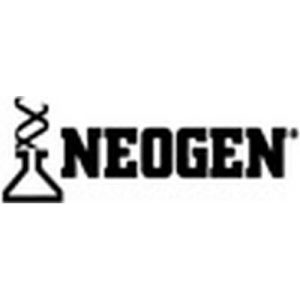
Oxford Listeria Agar, 10 kg
$3,427.81 Add to cart View Product DetailsOxford Listeria Agar, 10 kg
-

Oxolinic Acid
$11,325.12 Add to cart View Product DetailsOxolinic Acid
-
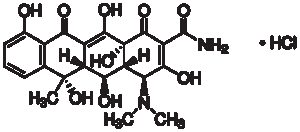
Oxytetracycline hydrochloride
$52.57 Add to cart View Product DetailsOxytetracycline hydrochloride
-

p-Anisaldehyde, Reagent
$1,762.29 Add to cart View Product Detailsp-Anisaldehyde, Reagent
-

p-Anisic Acid
$3,405.30 Add to cart View Product Detailsp-Anisic Acid
-

p-Coumaric acid, ≥98%
$72.32 Add to cart View Product DetailsP-Coumaric Acid
-

p-Dimethylamino-benzaldehyde
$37.67 Add to cart View Product DetailsP-Dimethylamino-Benzaldehyde
-

p-Dimethylaminocinnamaldehyde
$53,690.88 Add to cart View Product Detailsp-Dimethylaminocinnamaldehyde
-

p-Naphtholbenzein
$154.54 Add to cart View Product Detailsp-Naphtholbenzein
-
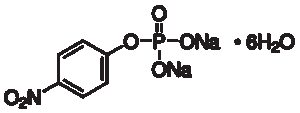
p-Nitrophenyl Phosphate Disodium Salt Hexahydrate
$152.62 Add to cart View Product DetailsP-Nitrophenyl Phosphate, Disodium Salt Hexahydrate
-
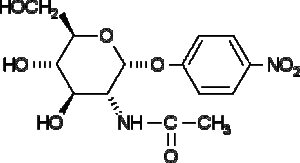
p-Nitrophenyl-n-acetyl-alpha-D-glucopyranoside
$136.37 Add to cart View Product DetailsP-Nitrophenyl-N-Acetyl-Α-D-Glucosaminide
-
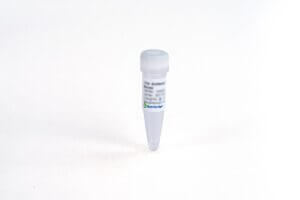
p-Tau181 Antibody(A2F), mAb, Mouse
$3,803.63 Add to cart View Product DetailsMicrotubule associated protein tau is a neuronal microtubule-associated protein found predominantly in brain. Abnormal phosphorylation of tau is involved in the pathogenesis of Alzheimer’s disease (AD). The tau protein phosphorylated at threonine 181 (p-tau181) is a promising diagnostic biomarker for AD.
-

p-Toluenesulfonic acid, monohydrate
$24.45 Add to cart View Product DetailsP-Toluenesulfonic Acid, Monohydrate
-

Palladium on Charcoal, 5 Percent, Catalyst, Powder
$346.13 Add to cart View Product DetailsPalladium on Charcoal, 5 Percent, Catalyst, Powder
-
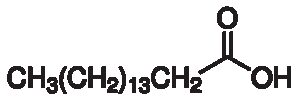
Palmitic acid, ≥99%
$43.45 Add to cart View Product DetailsPalmitic Acid
-

Pancuronium Bromide
$57.62 Add to cart View Product DetailsPancuronium Bromide
-

PANTOTHENIC ACID CONTROL DIET
$694.96 Add to cart View Product DetailsPANTOTHENIC ACID CONTROL DIET
-

PANTOTHENIC ACID CONTROL DIET
$735.11 Add to cart View Product DetailsPANTOTHENIC ACID CONTROL DIET
-

PANTOTHENIC ACID DEFICIENT DIET
$694.96 Add to cart View Product DetailsPANTOTHENIC ACID DEFICIENT DIET
-

PANTOTHENIC ACID DEFICIENT DIET
$735.11 Add to cart View Product DetailsPANTOTHENIC ACID DEFICIENT DIET
-

PANTOTHENIC ACID DEFICIENT DIET, Modified
$597.31 Add to cart View Product DetailsPANTOTHENIC ACID DEFICIENT DIET, Modified
-

PANTOTHENIC ACID DEFICIENT DIET, Modified
$650.49 Add to cart View Product DetailsPANTOTHENIC ACID DEFICIENT DIET, Modified
-

PAPP-A (19D1), mAb, Mouse
$1,164.38 Add to cart View Product DetailsPregnancy-associated plasma protein A (PAPP-A) is a high molecular weight protein. htPAPP-A is a protein complex which comprises of two PAPP-A subunits and two proform of eosinophil major basic protein. It exists in the blood of pregnant woman. dPAPP-A is a htPAPP-A dimmer which is composed of two PAPP-A subunits. htPAPP-A serves as a useful marker for the diagnosis of Down syndrome (DS).
-

PAPP-A (1AC2), mAb, Mouse
$1,164.38 Add to cart View Product DetailsPregnancy-associated plasma protein A (PAPP-A) is a high molecular weight protein. htPAPP-A is a protein complex which comprises of two PAPP-A subunits and two proform of eosinophil major basic protein. It exists in the blood of pregnant woman. dPAPP-A is a htPAPP-A dimmer which is composed of two PAPP-A subunits. htPAPP-A serves as a useful marker for the diagnosis of Down syndrome (DS).
-

Parafin Block Storage Cabinet,corrugated
$94.23 Add to cart View Product Details8 drawers, 500 parafin blocks, stackable
-

Paraformaldehyde, 16% aqueous solution, methanol free
$276.09 Add to cart View Product DetailsReady to use 16% solution used as a fixative for electron microscopy. Recommended for use in the preparation of formalin fixatives for tissues or cells when the samples are to be used in florescence studies. Methanol free
-

PARAROSANILINE ACETATE
$54.37 Add to cart View Product DetailsPARAROSANILINE ACETATE
-

PARENTERAL HYPERALIMENTATION FLUID
$141.47 Add to cart View Product DetailsPARENTERAL HYPERALIMENTATION FLUID
-

Patulin
$323.39 Add to cart View Product DetailsPatulin
-
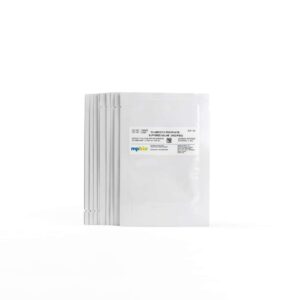
PBS, Dulbecco’s formula, powder, w/o Ca, Mg
$47.44 Add to cart View Product DetailsPhosphate Buffered Salts, Dulbecco’s Formula (DPBS) is a balanced salt solution (BSS) used for the handling and culturing of mammalian cells. DPBS is used to irrigate, wash, and dilute mammalian cells. Phosphate buffering maintains the pH in the physiological range. Calcium and magnesium facilitate cell binding and clumping. DPBS without these ions can be used to wash and rinse suspended cells.
-

PCR Rack 32 Place, Blue, pk10
$35.68 Add to cart View Product DetailsSpace Saving Design
* Small and compact design is stackable, saving valuable space in the freezer
* Right sized when processing smaller batches
* Lid hinge design allows lid to to sit at 180 degrees, clear of sample processing, or can be removed entirelyReusable Convenience
* Transparent lid protects samples and allows for quick assessment of contents
* Embossed numbers and letters on the wells provide easy identification and tracking of samples
* Light-weighted construction made durable for reusability -

PCR Rack for 0.2 mL Tubes or Assay Plates, 32-Place, Blue
$44.14 Add to cart View Product DetailsPCR Rack for 0.2 mL Tubes or Assay Plates, 32-Place, Blue
-

PCT (16A1), mAb, Mouse
$1,311.00 Add to cart View Product DetailsPCT, a 116 amino acid (aa) protein, is comprised of three sections including a 57 aa N-terminal PCT, a 32 aa calcitonin and a 21 aa katacalcin. Calcitonin is a hormone, derived from PCT cleavage. PCT is a good diagnosis marker for bacterial infection. Other diseases such as sepsis, inflammation, surgery, heat shock, burn injuries and cardiogenic shock can also cause an increase of PCT level in blood.
-

PCT (18D2), mAb, Mouse
$1,311.00 Add to cart View Product DetailsPCT, a 116 amino acid (aa) protein, is comprised of three sections including a 57 aa N-terminal PCT, a 32 aa calcitonin and a 21 aa katacalcin. Calcitonin is a hormone, derived from PCT cleavage. PCT is a good diagnosis marker for bacterial infection. Other diseases such as sepsis, inflammation, surgery, heat shock, burn injuries and cardiogenic shock can also cause an increase of PCT level in blood.
-

PCT (18M3), mAb, Mouse
$1,311.00 Add to cart View Product DetailsPCT, a 116 amino acid (aa) protein, is comprised of three sections including a 57 aa N-terminal PCT, a 32 aa calcitonin and a 21 aa katacalcin. Calcitonin is a hormone, derived from PCT cleavage. PCT is a good diagnosis marker for bacterial infection. Other diseases such as sepsis, inflammation, surgery, heat shock, burn injuries and cardiogenic shock can also cause an increase of PCT level in blood.
-

PCT (PE21), mAb, Mouse
$1,311.00 Add to cart View Product DetailsPCT, a 116 amino acid (aa) protein, is comprised of three sections including a 57 aa N-terminal PCT, a 32 aa calcitonin and a 21 aa katacalcin. Calcitonin is a hormone, derived from PCT cleavage. PCT is a good diagnosis marker for bacterial infection. Other diseases such as sepsis, inflammation, surgery, heat shock, burn injuries and cardiogenic shock can also cause an increase of PCT level in blood.
-

PD 98059, NeuroPure
$63.43 Add to cart View Product DetailsPD 98059, NeuroPure
-

PD-1 (2E5), mAb, Mouse
$13,066.88 Add to cart View Product DetailsProgrammed Cell Death Protein 1 (PD-1), is cell surface receptor expressing on T cells and pro-B cells. The binding of PD-1 to its two ligands, PD-L1 and PD-L2, could result in down-regulation of the immune system by inhibiting the T-cell activation process. Thus, PD-1 is an important immune checkpoint and a popular target for therapeutic antibodies against many cancers.
-

PD-10 Spin Adapter
$29.10 Add to cart View Product DetailsPD-10 Spin Adapter
-

PD-L1 Fc Chimera, Mouse
$34.50 Add to cart View Product DetailsProgrammed death-ligand 1 (PD-L1) also known as cluster of differentiation 274 (CD274) or B7 homolog 1 (B7-H1), is a protein that in humans is encoded by the CD274 gene. PD-L1 is a 40 kDa type 1 transmembrane protein that has been speculated to play a major role in suppressing the immune system during particular events such as pregnancy, tissue allografts, autoimmune disease and other disease states such as hepatitis. Normally the immune system reacts to foreign antigens where there is some accumulation in the lymph nodes or spleen which triggers a proliferation of antigen-specific CD8+ T cell. The formation of PD-1 receptor / PD-L1 or B7.1 receptor /PD-L1 ligand complex transmits an inhibitory signal which reduces the proliferation of these CD8+ T cells at the lymph nodes and supplementary to that PD-1 is also able to control the accumulation of foreign antigen specific T cells in the lymph nodes through apoptosis which is further mediated by a lower regulation of the gene Bcl-2. PD-L1 binds to its receptor, PD-1, found on activated T cells, B cells, and myeloid cells, to modulate activation or inhibition.
-
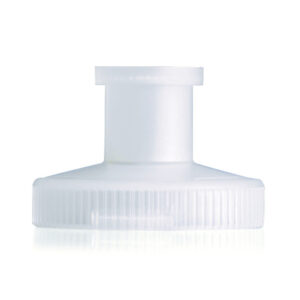
PD-Tip Adapter for 25 & 50mL, N/S, 10/PK
$98.67 Add to cart View Product DetailsPD-Tip Adapter for 25 & 50mL, N/S, 10/PK
-
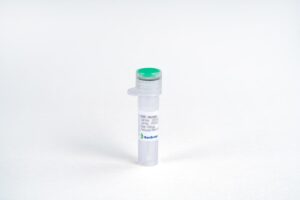
PDGF-AA, Mouse
$90.56 Add to cart View Product DetailsPlatelet-Derived Growth Factor-AA (PDGF-AA) is one of five dimers (PDGF-AA, AB, BB, CC, and DD) formed by 4 different PDGF subunits. In chemical terms, platelet-derived growth factor is a dimeric glycoprotein composed of two A (-AA) or two B (-BB) chains or a combination of the two (-AB). The dimeric isoforms PDGFAA, AB and BB are differentially expressed in various cell types, and their effects are mediated through two distinct receptors termed α and β. Differences exist in isoform binding to each receptor. Ingeneral, PDGF isoforms are potent mitogens for connective tissue cells including dermal fibroblasts, glial cells, arterial smooth muscle cells and some epithelial andendothelial cells. In addition to its activity as a mitogen, PDGF is chemotactic for fibroblasts, smooth muscle cells, neutrophils and mononuclear cells. PDGF-AA plays a significant role in blood vessel formation (angiogenesis).
-

PDGF-BB, Bovine
$103.50 Add to cart View Product DetailsPlatelet-derived growth factor (PDGF) presenting in serum but absent from plasma was first discovered in an animal study by Lynch and co-workers in the late 1980s. It is a disulfide-linked dimer consisting of two peptides-chain A and chain B. PDGF has three subforms: PDGF-AA, PDGF-BB, and PDGF-AB. It is involved in many biological processes, including hyperplasia, embryonic neuron development, chemotaxis, and respiratory tubule epithelial cell development. The function of PDGF is mediated by two receptors (PDGFR-α and PDGFR-β).
-

PDGF-BB, Human
$103.50 Add to cart View Product DetailsPlatelet-derived growth factor (PDGF) presenting in serum but absent from plasma was first discovered in animal study by Lynch and co-workers in the late 1980s. It is a disulfide-linked dimer consisting of two peptides-chain A and chain B. PDGF has three subforms: PDGF-AA, PDGF-BB, PDGF-AB. It is involved in a number of biological processes, including hyperplasia, embryonic neuron development, chemotaxis, and respiratory tubule epithelial cell development. The function of PDGF is mediated by two receptors (PDGFR-α and PDGFR-β).
-

PDGF-BB, Human
$155.25 Add to cart View Product DetailsPlatelet-Derived Growth Factor-BB (PDGF-BB) is one of five dimers (PDGF-AA, AB, BB, CC, and DD) formed by 4 different PDGF subunits. In vivo, PDGF-BB is mainly produced in heart and placenta, and predominantly expressed by osteoblasts, fibroblasts, smooth muscle cells, and glial cells. An inactive precursor of PDGF-BB is produced in the endoplasmic reticulum and then activated by a proprotein convertase after secretion. PDGF-BB functions in a paracrine manner and promotes organogenesis, human skeletal development, and wound healing. PDGF-BB also promotes angiogenesis, particularly in the presence of Fibroblast Growth Factor basic. Therefore, PDGF-BB and its related pathways are potential pharmacological targets.






